Slovan Bratislava have been a highly dominant force in Slovakia for the past two years. They’ve become far too strong for Fortuna Liga, but strangely not that much in Europe – which could be a sign of the level of football in Slovakia’s top-flight. In Slovakia though, they’re simply unbeatable, with Ján Kozák’s side forcing in 46 goals and allowing only 11 goals from 22 games in the Fortuna Liga. They are both the most prolific and the most defensively solid in the league this season.
Aside from their impressive tactics and system, goal machine Andraž Šporar and highly-talented goalkeeper Dominik Greif have been the key players for Slovan Bratislava this season. While Šporar has earned a move to Sporting CP this winter, there have been rumours that Greif will follow suit.
The 1997-born Slovak goalkeeper has been absolutely amazing this season, keeping 12 clean sheets from 17 games in Fortuna Liga, conceding only 10 goals in the process. In Europa League, however, Greif has conceded 13 goals from six games. But judging by his own performance and his team’s overall defensive performance, he’s surely not the one to blame.
In this tactical analysis/scout report, we’ll be taking a look at Greif attributes and how he contributes both defensively and offensively to Slovan Bratislava’s tactics.
Physical prowess
Standing at 1.97 m (6’5″), Greif has great height for a goalkeeper. Weighing 84 kg (185.2 lbs), Greif has a rather lean build with decent upper muscle size but rather thin and long legs. His long and fairly thin legs certainly don’t automatically indicate that he has weak lower body power. The Bratislava native goalkeeper is able to generate decent power when leaping as well as kicking. However, on the ground, his lack of lower body power can be seen which will be talked about later in this analysis.
His tall frame coupled with good body strength as well as decent lower power when leaping allows him to reach superb vertical distance and gives him a great advantage in aerial duels.
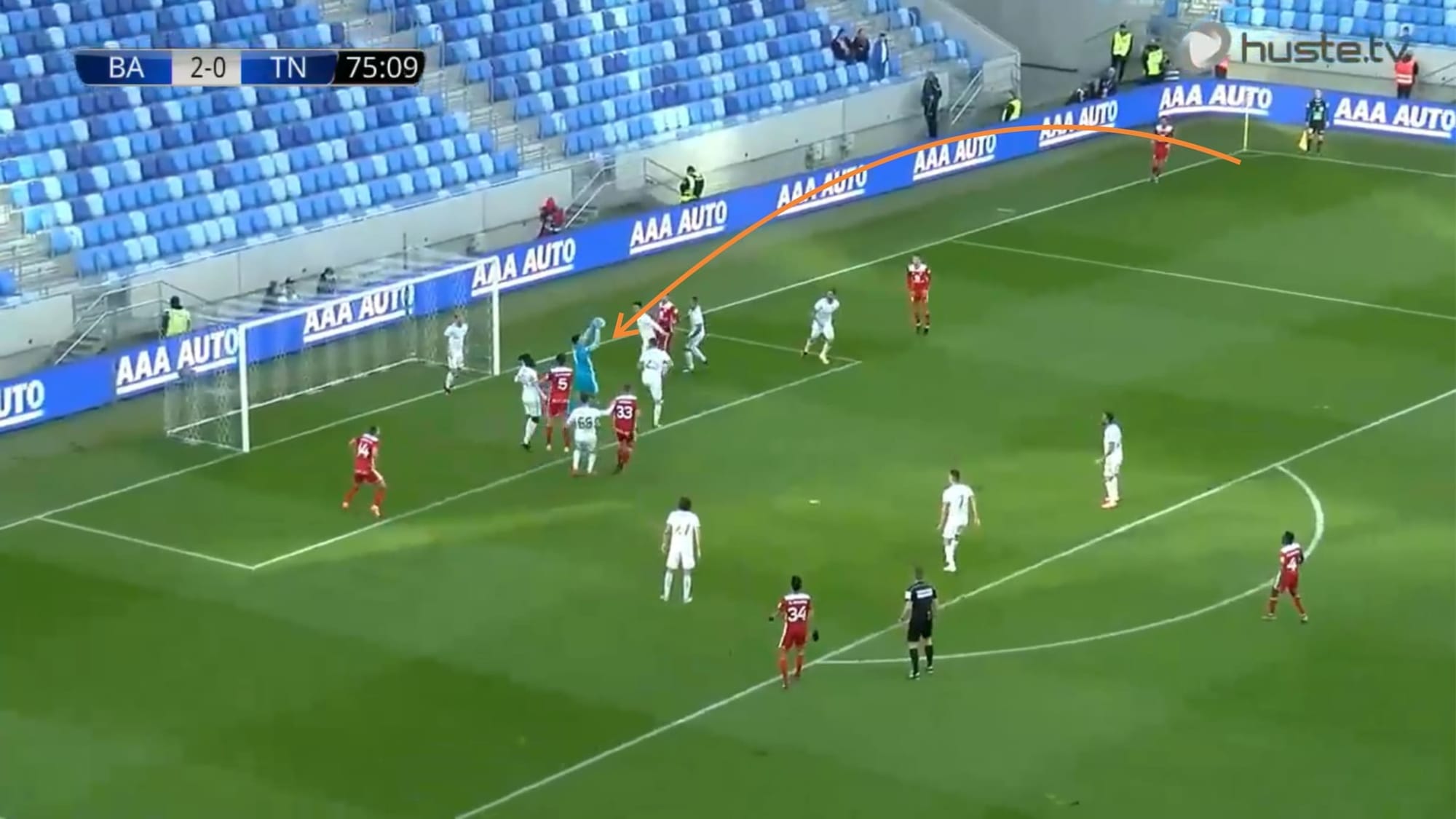
Above you can see Greif successfully claiming the ball from a corner. Greif usually has little trouble dealing against aerial balls even when he is challenged by tall, strong attackers. When facing an aerial ball inside the box – whether it be from a cross or a set-piece situation – Greif mostly likes to claim the ball but occasionally likes to punch it away as well.
He seems to be able to direct the ball (with his punch) either towards his teammate or at least away from potentially dangerous areas. His punches, however, often fall not too far from the edge of the box which can still potentially result in the opposing team recovering the ball in a very high position on the pitch so the power and direction of the ball may still need to be worked on when it comes to punching the ball.
Despite being dominant in the air, Greif is still rather vulnerable due to his slow acceleration. This is perhaps the main reason why he often hesitates to come off his line to sweep up loose balls/through balls into space or rush off the six-yard box to catch or intercept an aerial ball.
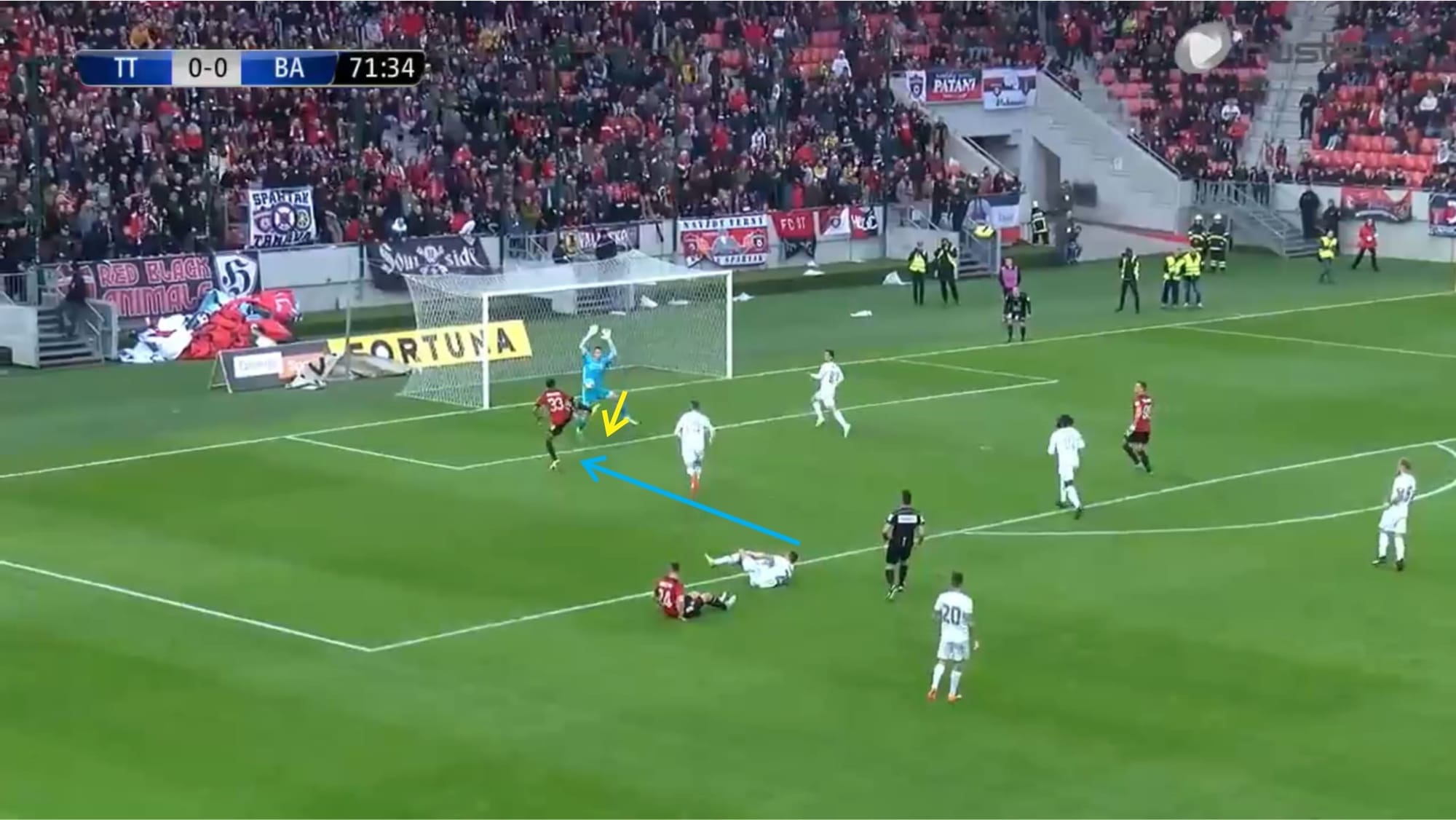
In the image above, for example, an opposing player took a heavy touch from just outside the box. Seeing that the ball would fall not far from him and he had to cover a smaller distance compared to his opponent, Greif rushed off his line and looked to commit to the ball. However, despite only having to cover a smaller distance, his opponent still managed to get to the ball just a split second quicker than Greif. The goalkeeper then quickly reacted by making himself big but his opponent still managed to get the ball past him with a neat touch but fortunately for Greif, his opponent’s cross ended up being inaccurate and his team were ultimately safe.
Despite his lack of explosiveness though, Greif has decent agility and upper and lower coordination. This allows him to quickly turn and twist to adjust his body accordingly depending on the situations without needing to take an odd extra step in doing so. He doesn’t seem to struggle when turning and adjusting his body and his hips seem to be quite mobile and rotate sufficiently and he’s often able to move along his line quickly due to good linear agility. His great hand-eye coordination also ensures extremely quick and accurate reflexes.
Tactical tendencies and defensive abilities
Greif is more of a defensive goalkeeper rather than a sweeper keeper. Most of the time, he’d stay deep rather than come off his line and commit to the ball. There are, however, some times when he was forced to come off his line and sweep up loose balls or potentially dangerous opposition through balls into the back of his team’s defence due to his team’s tendency to block high and press rather aggressively up front. As mentioned before in this tactical analysis/scout report, his lack of explosiveness often makes him rather vulnerable in these situations, not just because he can potentially be beaten to the ball by his opponent, but at times his being aware of his weakness seems to impair his judgment as well. This can be seen as sometimes he seems unsure whether or not to come out or stay deep. In some situations, he’ll take one or two steps forward but then decides not to commit to the ball and then moves back to protect the goal.
Despite his superior aerial ability, Greif doesn’t always come off his line to claim or intercept an aerial ball. At times, this can potentially lead to more dangerous situations, perhaps even result in a goal for the opposing team.
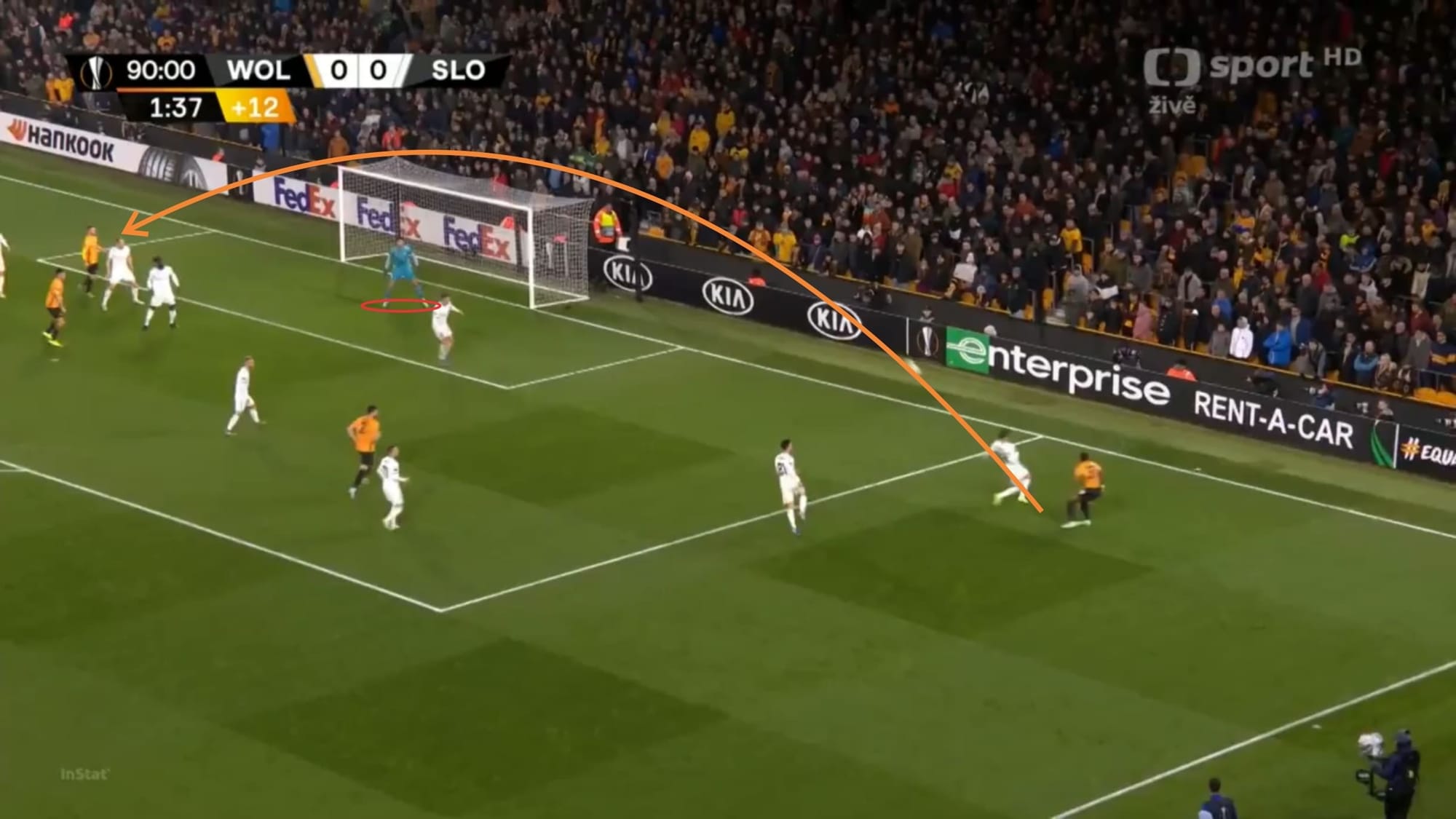
In the image above, you can see the opposing winger crossing the ball into the box. The trajectory of the cross was high and it was out-swinging. The cross was rather pacey but not very sharp either so Greif surely had time to adjust his body, come off his line and intercept the cross, if not by claiming it, he could at least punch the ball away from danger.
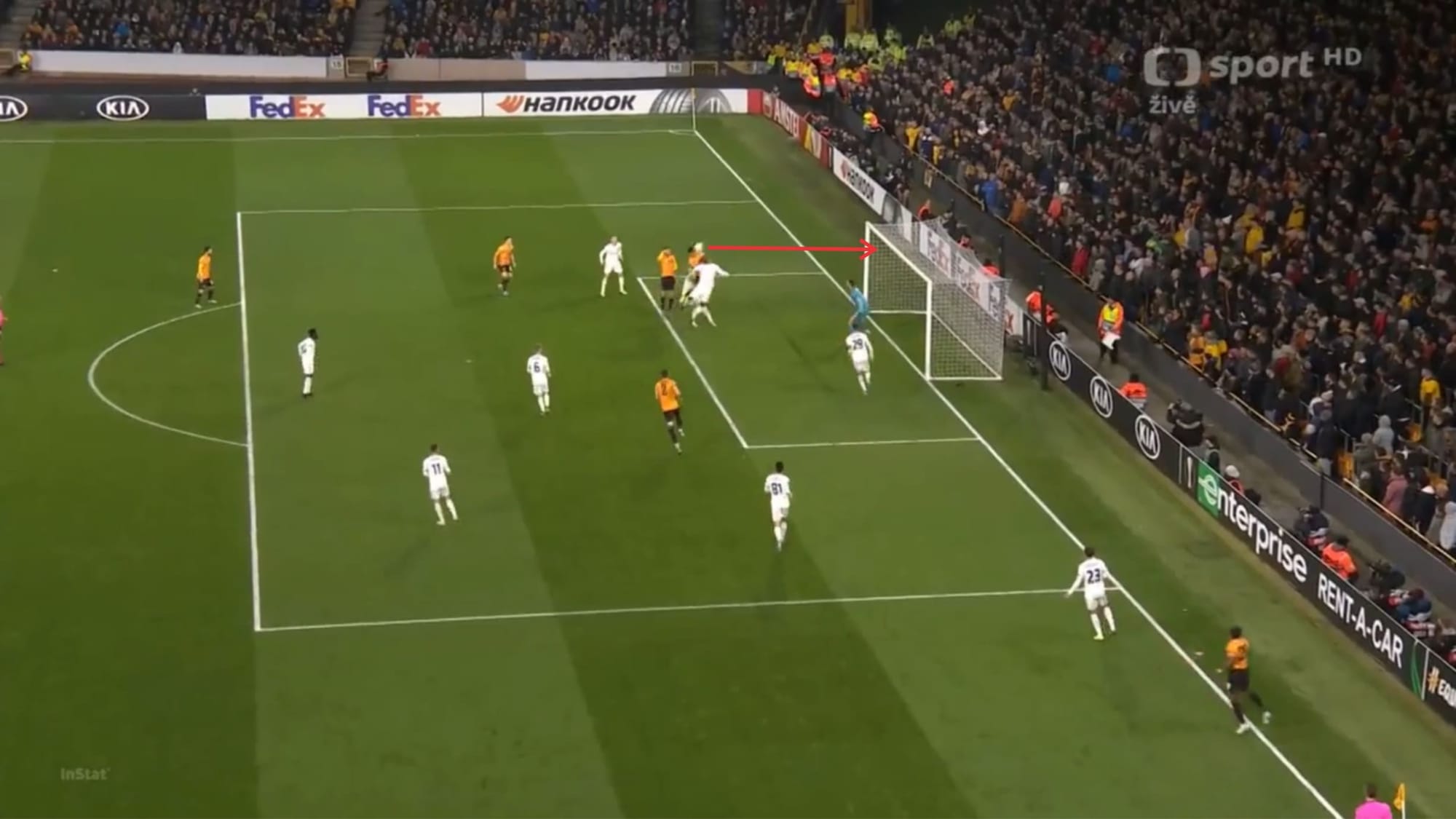
However, instead of doing so, Greif stayed in front of his line and didn’t commit to the ball. Perhaps he was also expecting his teammate to deal with the cross. But in reality, the opposing striker managed to get his head to the ball and scored a goal with a powerful header into the far post. Above you can see that Greif’s body shape and positioning already indicates that he was ready to face a shot/header from the opposing striker. But the header was very close to the goal and was very powerful as Greif had no time to react before the ball hit the net. This was a poor decision from the player that led to a terrible result.
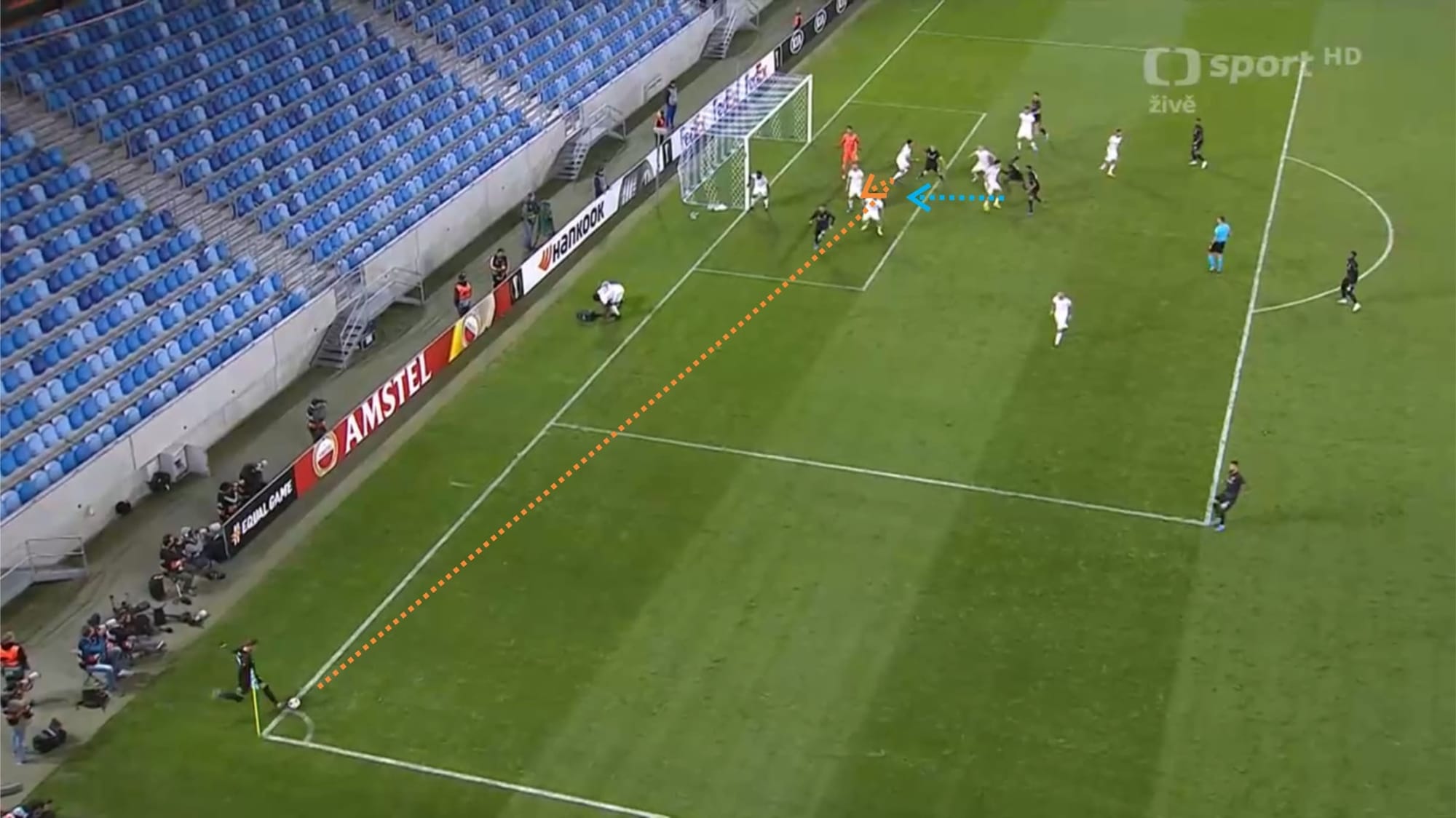
A similar situation can be seen in the picture above. The opposing team had a corner-kick and decided to use a right-footed kicker to produce an in-swinging cross. The ball was crossed to the near-post just inside the six-yard box. Although there were several players in his path, Greif could have still committed to the ball and intercepted it as the ball was directed towards an area very close to him. Of course, he also had the choice to stay deeper and protect the goal.
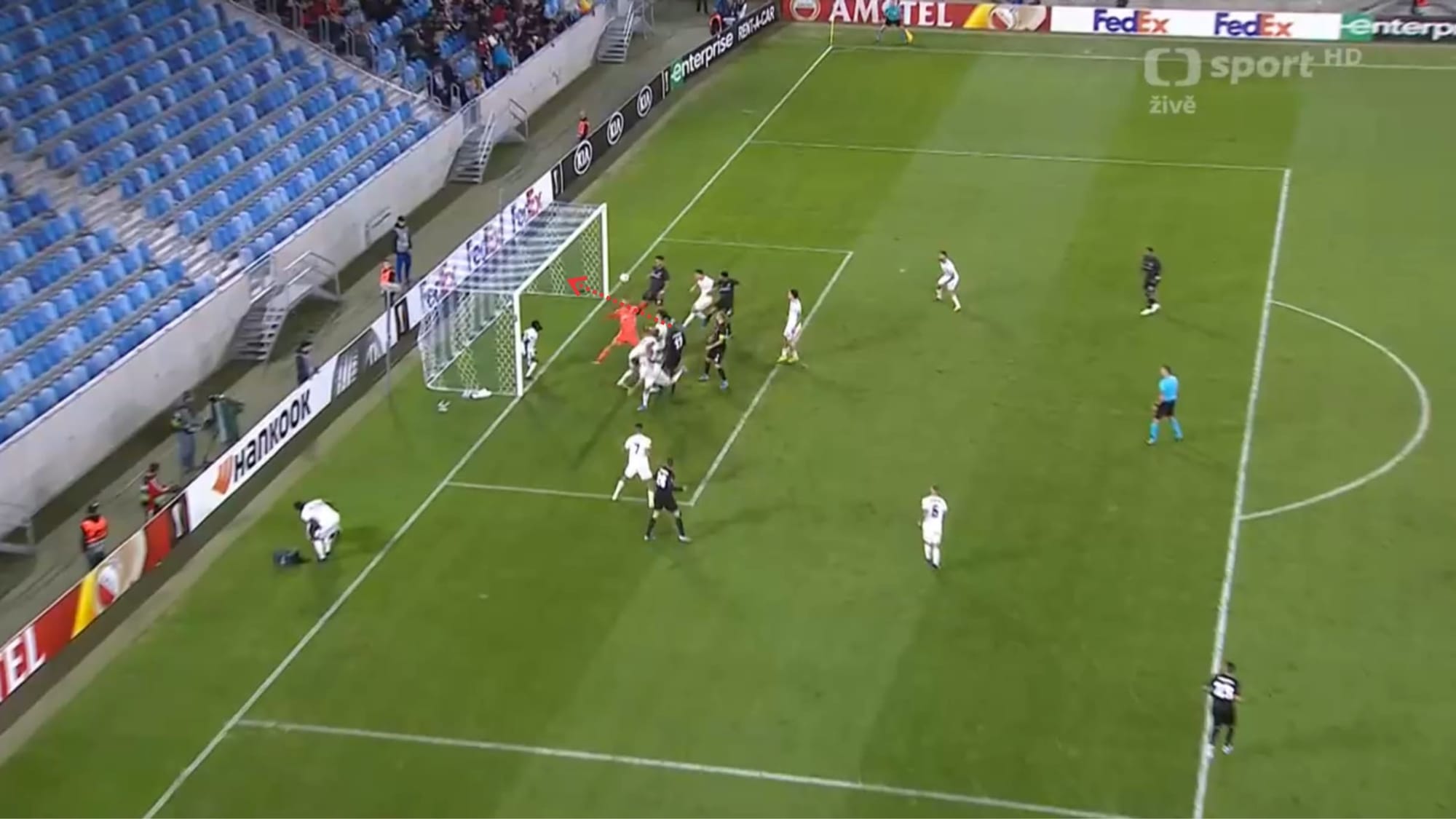
But in this particular situation, he was indecisive and did neither. It seemed like he wanted to get to the ball but he’s a bit unsure and in the end, didn’t commit to it. As a result, he didn’t manage to intercept the ball and didn’t protect the goal either. The opposing player managed to get his head to the ball and directed it into the net. Surely were it not for his quick reflexes and agility, Greif wouldn’t have saved the shot and prevented his team from conceding. Though this particular situation does show his impressive close-range shot-stopping ability, what’s more prominent is his indecisiveness in dealing with aerial balls.
Those two examples above, however, don’t necessarily indicate that he has poor aerial ability but rather that his judgment when dealing with aerial balls does need some improvements. Due to his physicality, if Greif decides to come off his line and commit to the ball, he’s almost always successful but unfortunately, he doesn’t do so very often. Some other times, his teammates are also there to intercept the ball without him having to come off his line.
Statistically, there is an average of 20 opponents’ crosses faced per game with Greif making only an average of 0.8 interceptions on average per game with a success rate of 90%. His handling is strong and when he really commits to the ball, he rarely misses the interception and rarely fumbles the ball (if he decides to claim it).
His judgment and decision making when rushing out does need some work but occasionally, he also shows that he’s actually not that bad when it comes to rushing out.
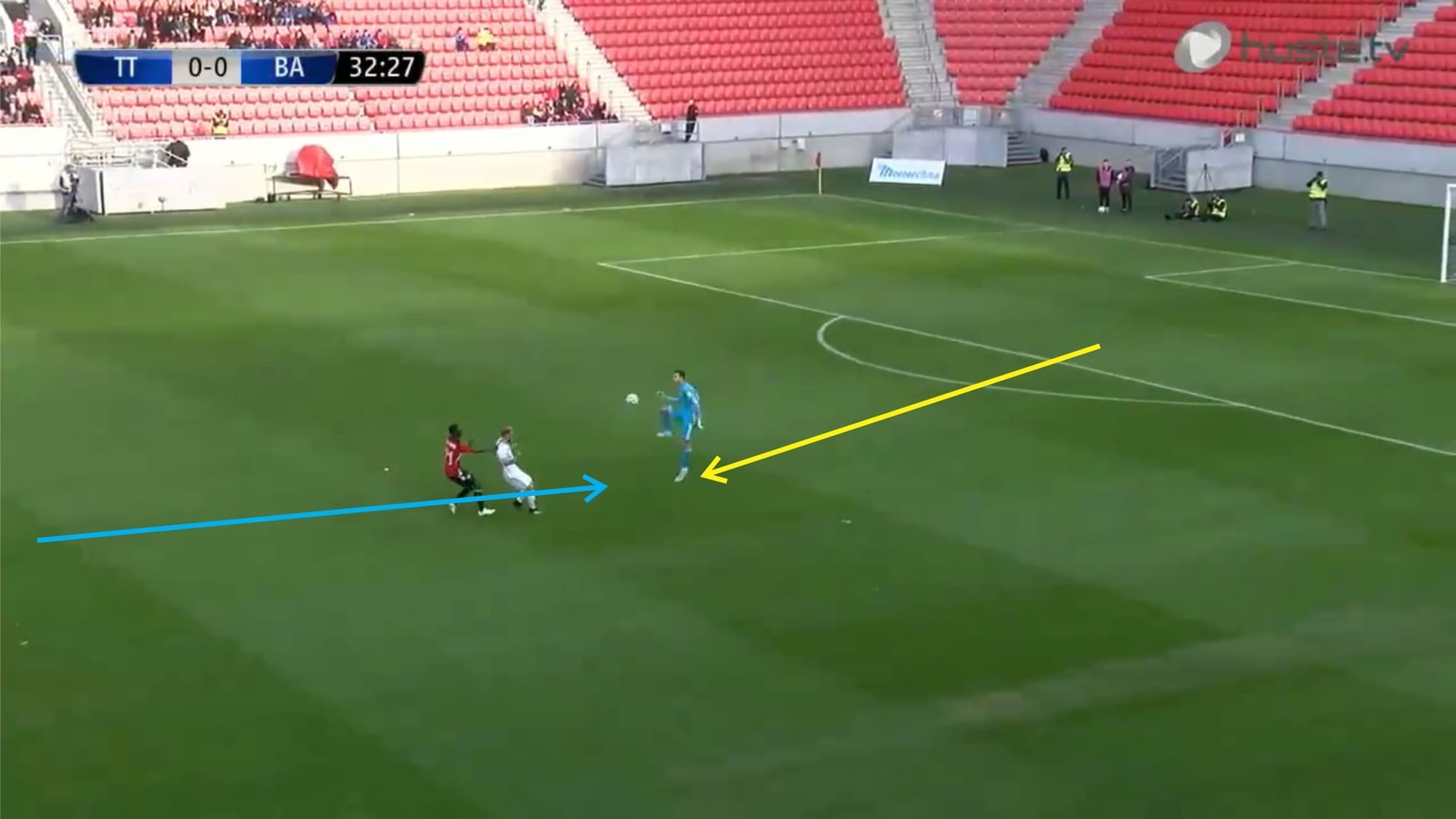
In the image above, for example, Greif quickly rushes off his line to clear the ball away from danger. Slovan Bratislava tends to play with a high block and press high, so there’s certainly space that can be exploited behind the defence. In this particular situation, Greif made a good decision to come out. The opposing goalkeeper played the ball long into the back of the defence.
Although at first glance it may seem like Greif’s teammate was in control of the situation, it should be taken into account that the opposing attacker was very pacey and he was going against Slovan Bratislava’s defensive midfielder, who was rather lacking in overall quickness. So there’s a big chance that the opposing attacker can get to the ball first or nick the ball away from the defensive midfielder. Greif saw this situation and quickly rushed out of the box and passed the ball first-time towards a free player on the flank, keeping the ball in play whilst clearing his team from danger. He shows good decision making and judgment in this particular situation, but he needs to be more consistent and less indecisive in this particular area of his game. Perhaps working on his horizontal explosiveness can also give him big advantages when rushing off his line.
As mentioned earlier in this tactical analysis/scout report, Greif is both tall and agile and aside from that, his positioning and body orientation are also good. This way he can close off shooting angles and protect the goal effectively.
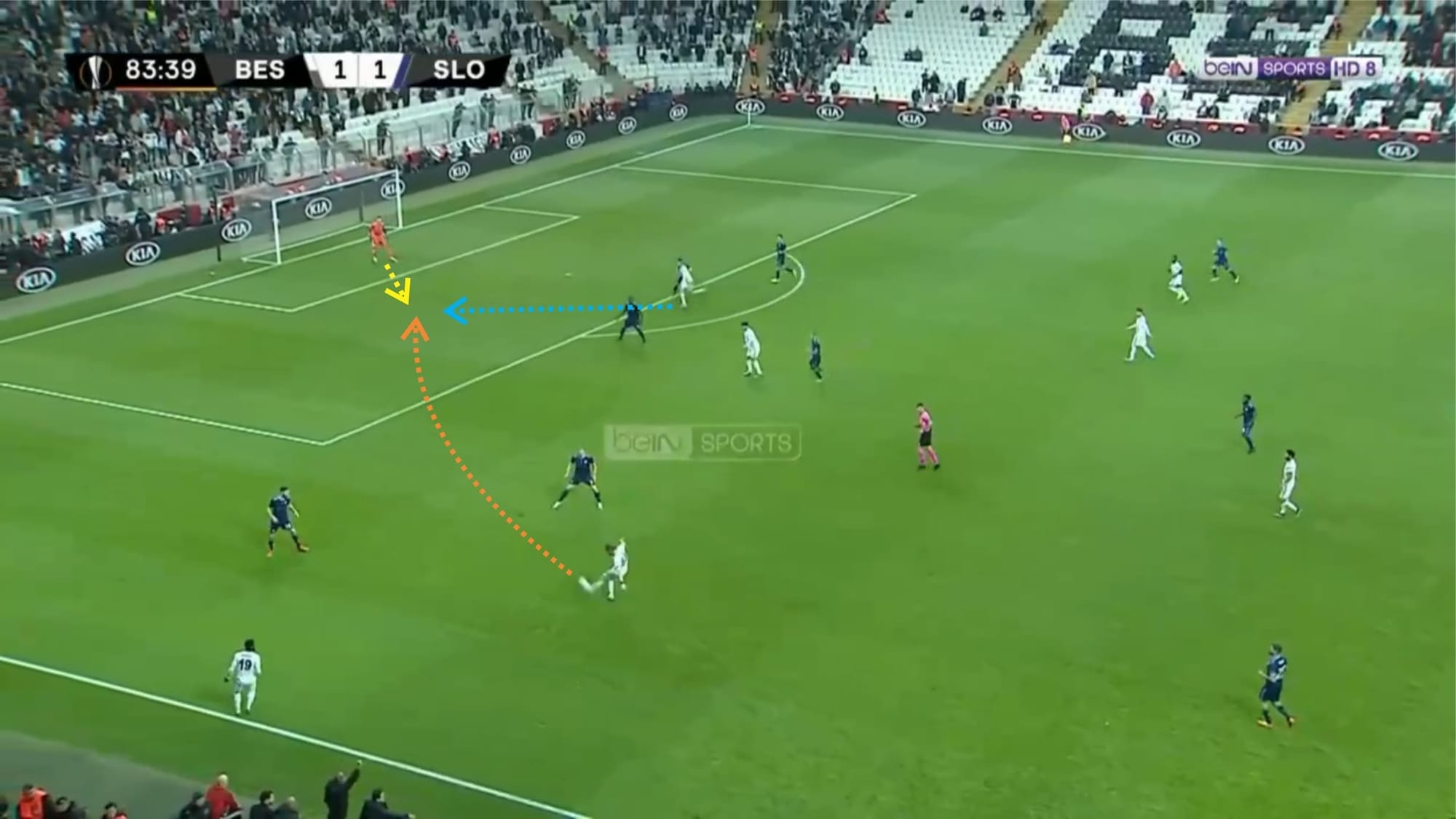
In the situation above, an opposing player delivered the ball into the box for his teammate to run onto. Greif showed good spatial and positional awareness and quickly reacted by getting into position accordingly.
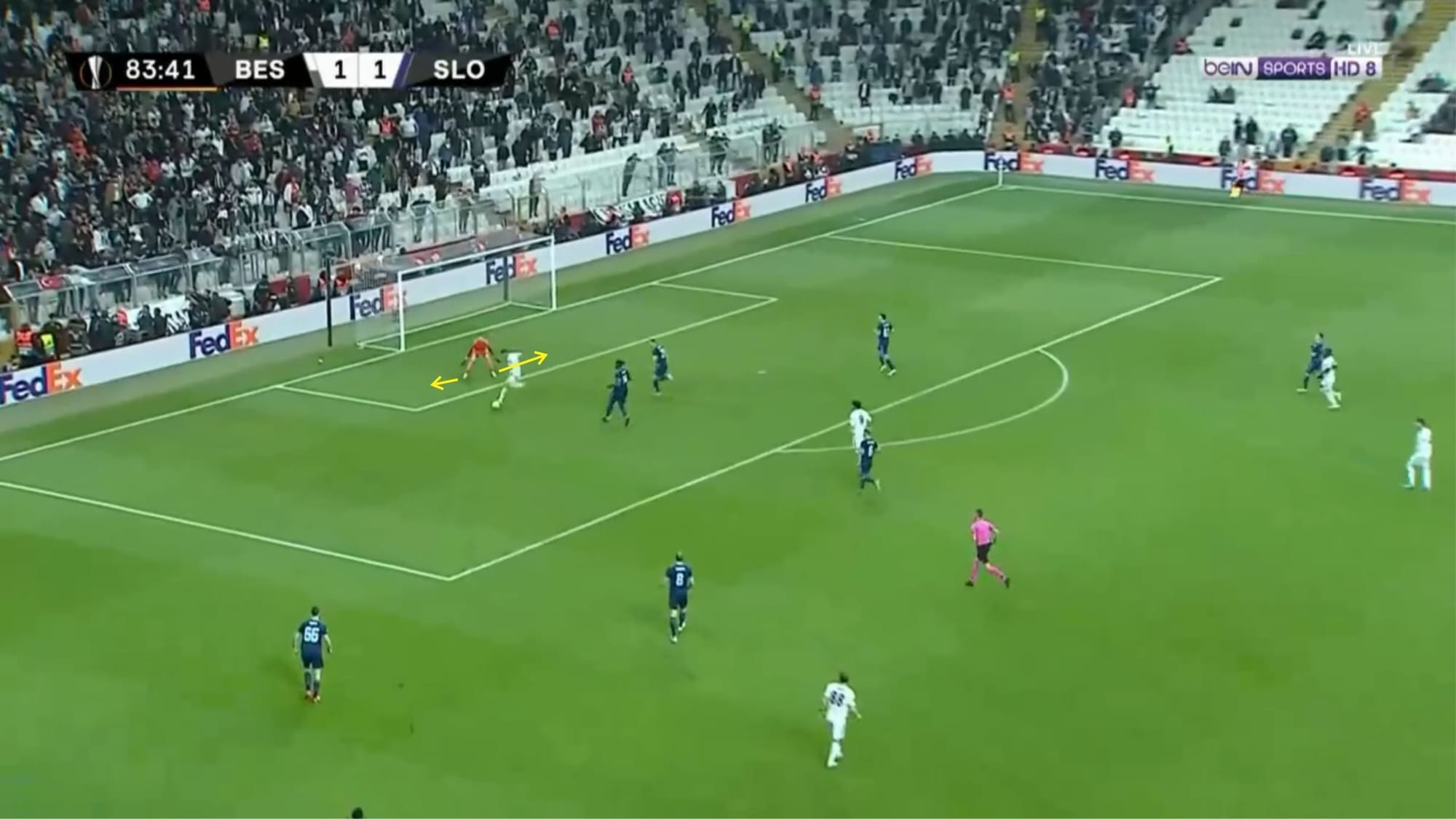
As you can see, Greif moved forward and closer to the near post. His body was square to the ball with his hands around waist height. With this positioning he was able to cover all shooting angles, making it extremely hard for the opposing player to score.
Greif, however, has a tendency not to commit to the ball and throw his body into it in certain situations which can result in him being beaten by a player via an opposing player’s dribble or a pass (in 2 v 1 situations) towards the opposing player’s teammate.
Though Greif tends to be more conservative rather than aggressive or stylish with his approach, his defensive abilities as a goalkeeper are very strong. Particularly his shot-stopping ability.
Statistically, Greif averages a shots-saved rate of 81% this season from an average of 4.7 shots on target faced.
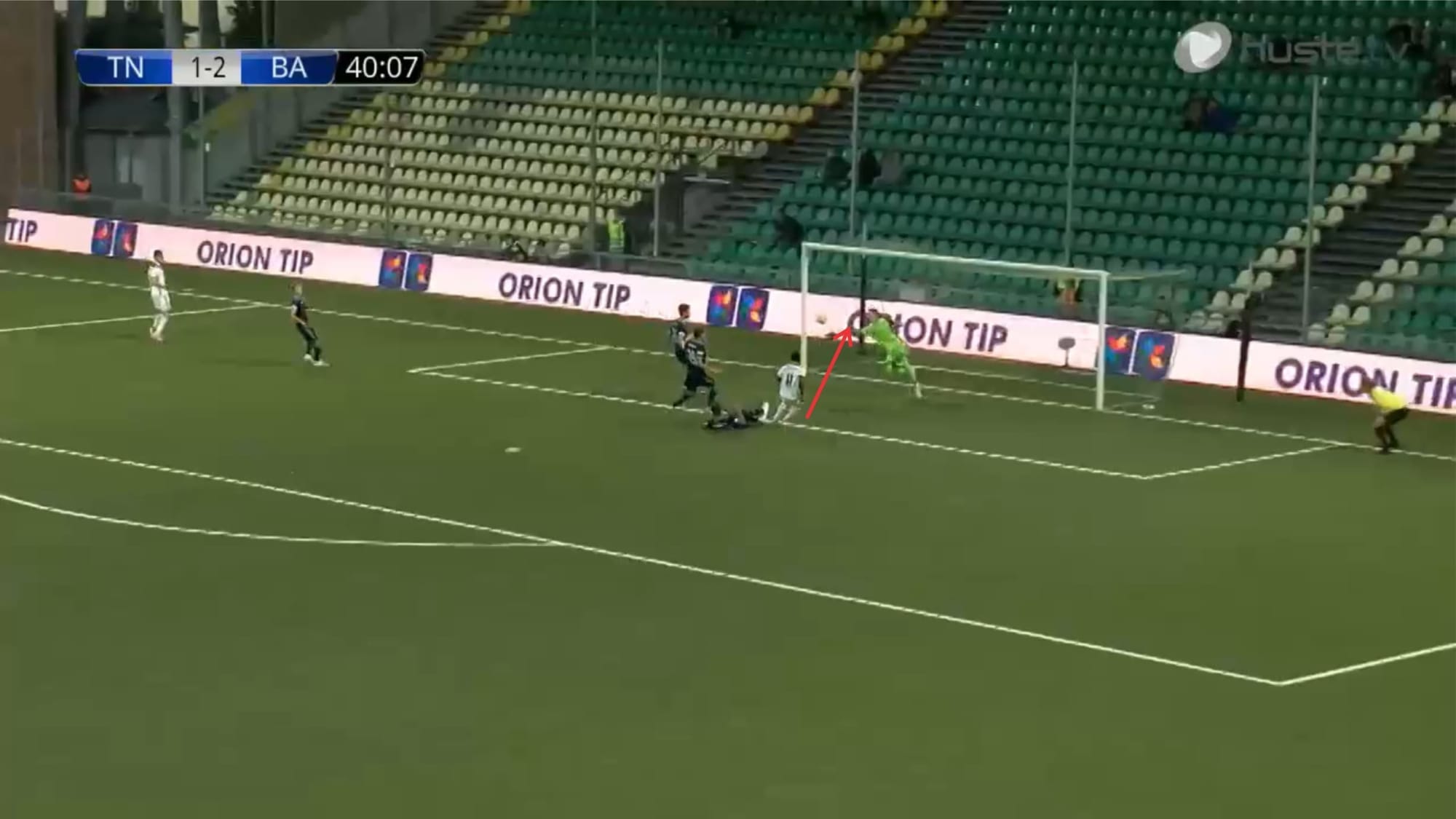
Greif is particularly strong in saving close-range shots. Thanks to his excellent concentration as well as superb hand-eye coordination and agility, Greif is often able to produce extremely quick and accurate saves. In close range situations, Greif is able to make saves with pretty much any part of his body depending on where the ball is going. There doesn’t seem to be any clear tendency as to whether or not he mostly uses his feet, hands, or body as he seems to use all of them equally, again, depending on where the ball is going.
Greif records an average of 74% close range shots-saved rate with an average of 1.69 close range shots on target faced. He also has an average of 79% mid-range shots-saved rate with 1.51 mid-range shots on target facet. Meanwhile, he’s very strong in dealing with long shots. Saving an average of 88% of long shots on target with 1.5 long shots on target faced.
As mentioned previously, his handling is also quite strong and he rarely fumbles the ball and makes a fatal mistake when catching the ball. Usually, when diving, Greif rarely catches the ball mid-air but tends to tip/push the ball away from danger.
Distribution and contribution in open play
Slovan Bratislava tend to play from the back and will look to circulate the ball around their half, maintaining possession using short-medium range passes while looking for gaps to exploit to exit the opposing team’s first line of pressure and work their way up. On the counter, however, they’ll become very direct and straightforward – mainly using long passes into space upfront for a player to run onto. Aside from his usual defensive tasks, Greif also plays a considerable part in Slovan Bratislava’s attacking and counter-attacking play as he’s the one who usually starts the team’s attacks. His distribution and contribution in open play, therefore, is highly important and he’s certainly not lacking proficiency in this area.
Greif usually likes to quickly restart the game by either throwing the ball back into play or punting the ball far forward to launch a counter-attack with mainly the striker as the counter target.
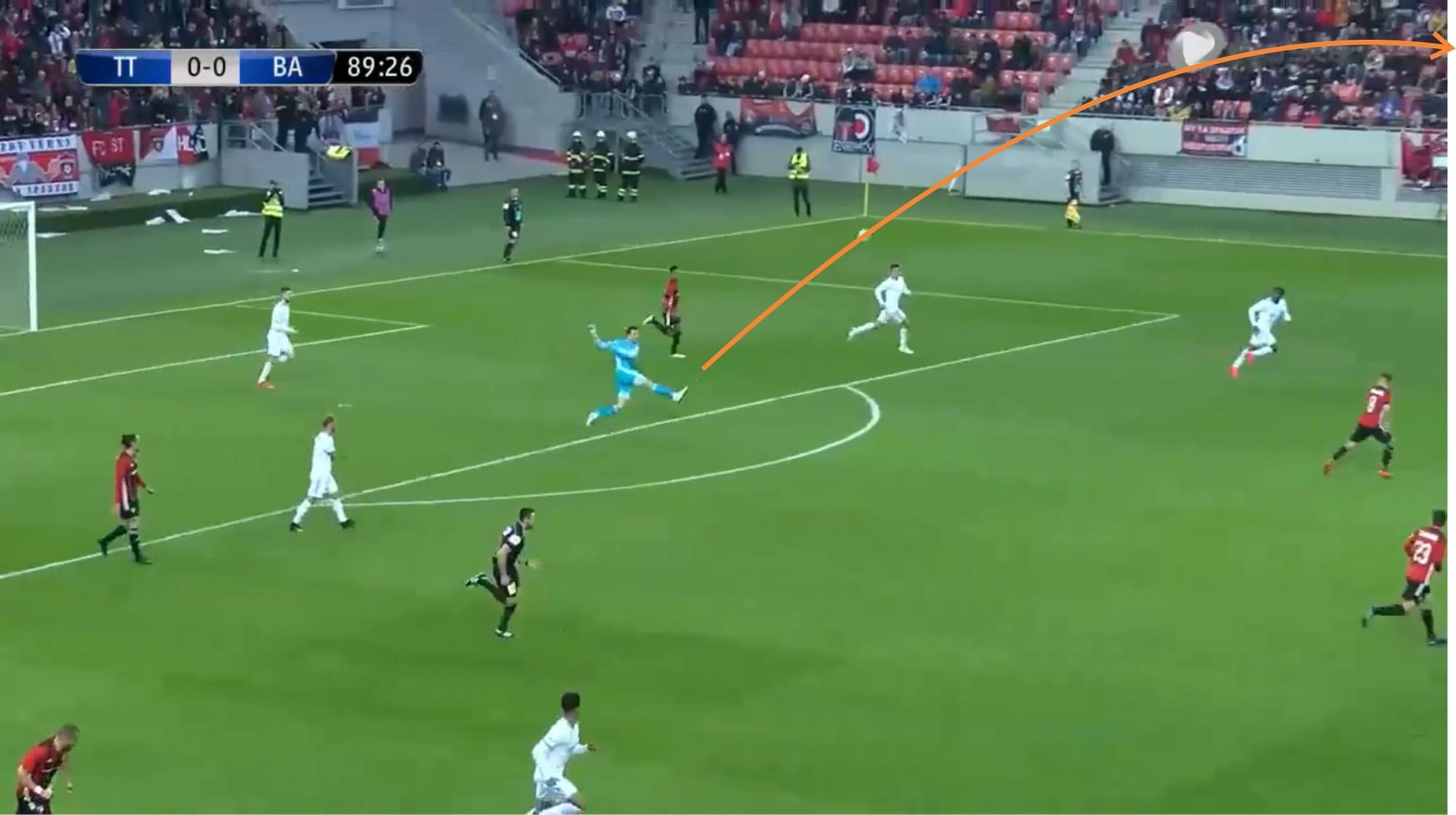
When it comes to punting, Greif usually produces a high punt, rather than a lower punt trajectory, but due to more backspin, the ball travels further and has longer flight. His side volley technique seems to be good. His body shape is spot on, the set-up is good, and the follow-through is flawless. Due to his excellent technique, Greif is able to produce a powerful, yet accurate punt, allowing him to start a counter-attack which can really hurt the opposition. He doesn’t seem to vary his technique and the trajectory of his punts are mainly high although occasionally flatter trajectories can be seen.
Aside from his technique, his ability to spot and decide which area or teammate he wants to deliver to is quite remarkable. This can prove quite substantial as it allows him to redistribute the ball into play and help his team hit the opposition on the break very quickly.
In goal-kicks, Greif usually chooses to play the ball short towards his teammate inside the box. The team will then proceed to play from the back and work their way up.
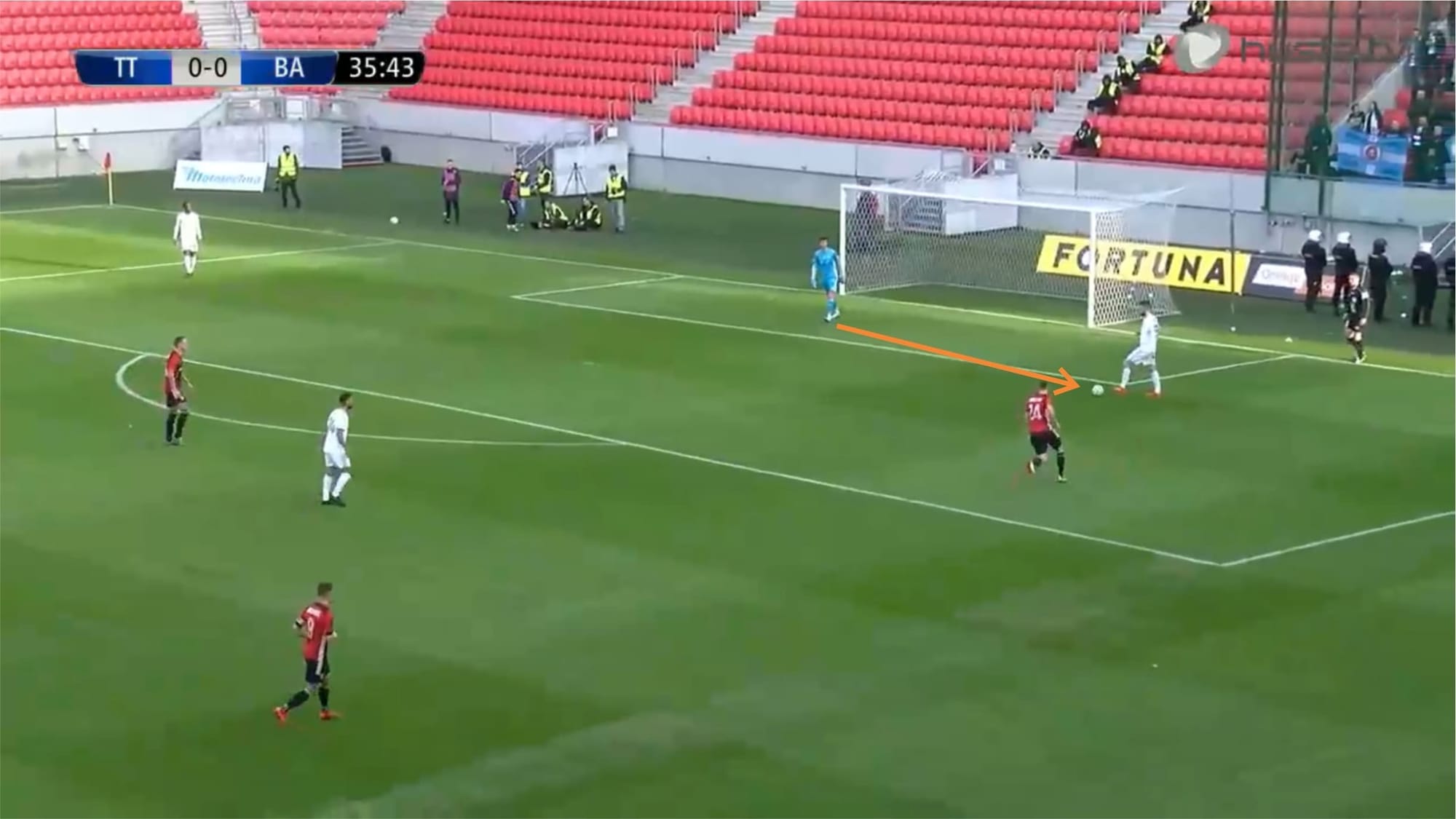
When playing from the back, Greif will look to get involved in the build-up. Instead of being passive and staying in front of goal, he’ll move around accordingly, looking to open passing lane so that he can receive the ball in case the ball carrier is isolated and forced to pass the ball back. His part can be quite important in the build-up as not only can he relieve pressure from the ball carrier and allow his team to restructure and restart the attack, but he also adds to the number at the back, allowing easier circulation and potentially attracting pressure so that a space/passing lane behind the first line of pressure can be opened.
Greif tends not to dwell on the ball when he receives it but rather tends to take only one or two touches before redistributing it. He’s very straightforward and rarely makes silly decisions, knowing full well that he has a rather limited ball-playing ability. Though he’s not necessarily neat on the ball, he’s not awkward either. His touch when receiving is rarely poor and he looks comfortable controlling and striking the ball with either foot.
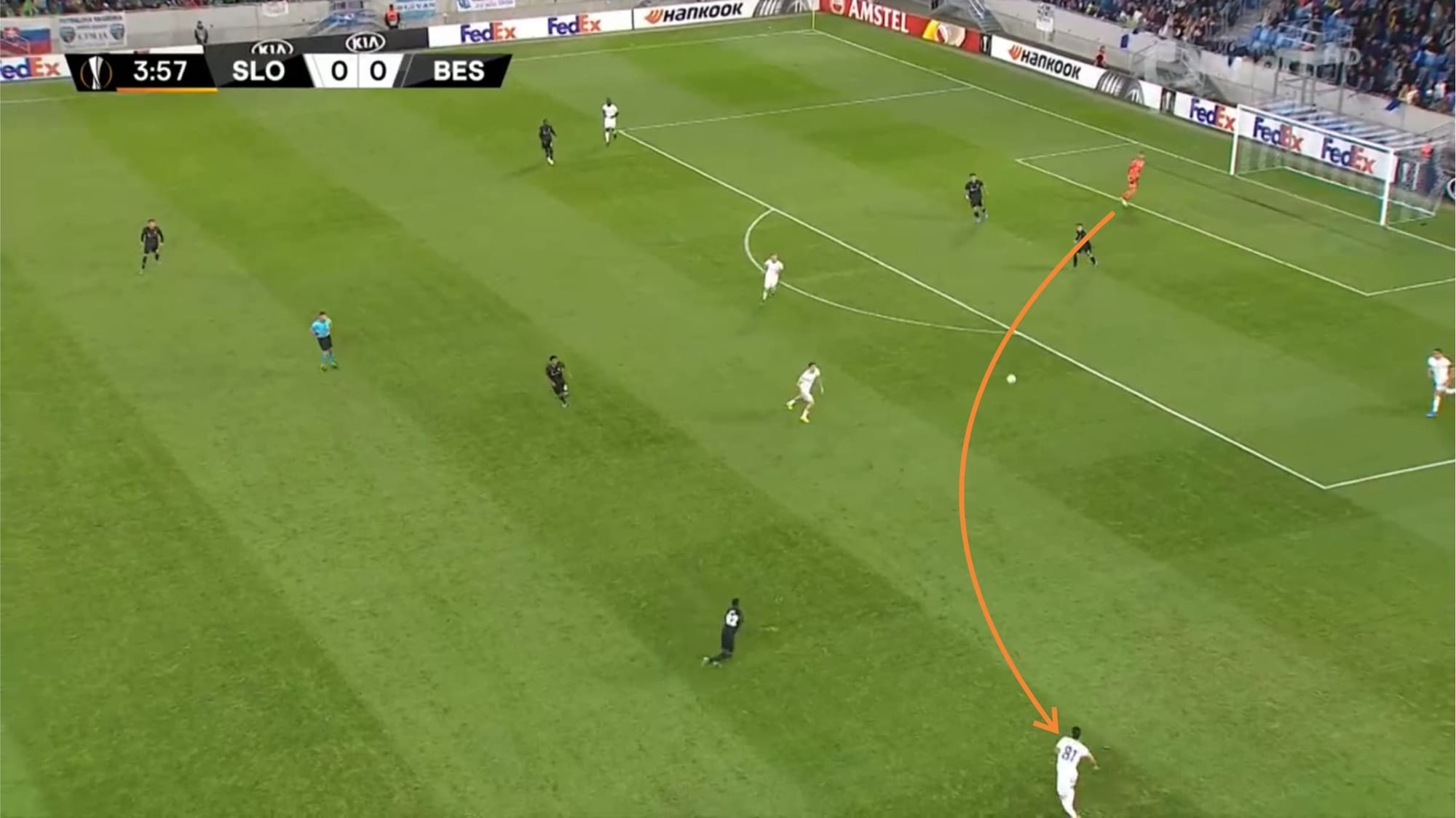
Greif also shows pretty decent vision when passing. At times, he’ll be forced to be creative when the opposing players manage to block his passing lanes while closing him down. The picture above is an example of his smart decision making and good vision accompanied by great execution.
When under pressure, Greif stays calm and doesn’t panic on the ball. Usually, if an opponent is aggressively closing him down when he’s receiving a ball from a defender, he’ll quickly play the ball long.
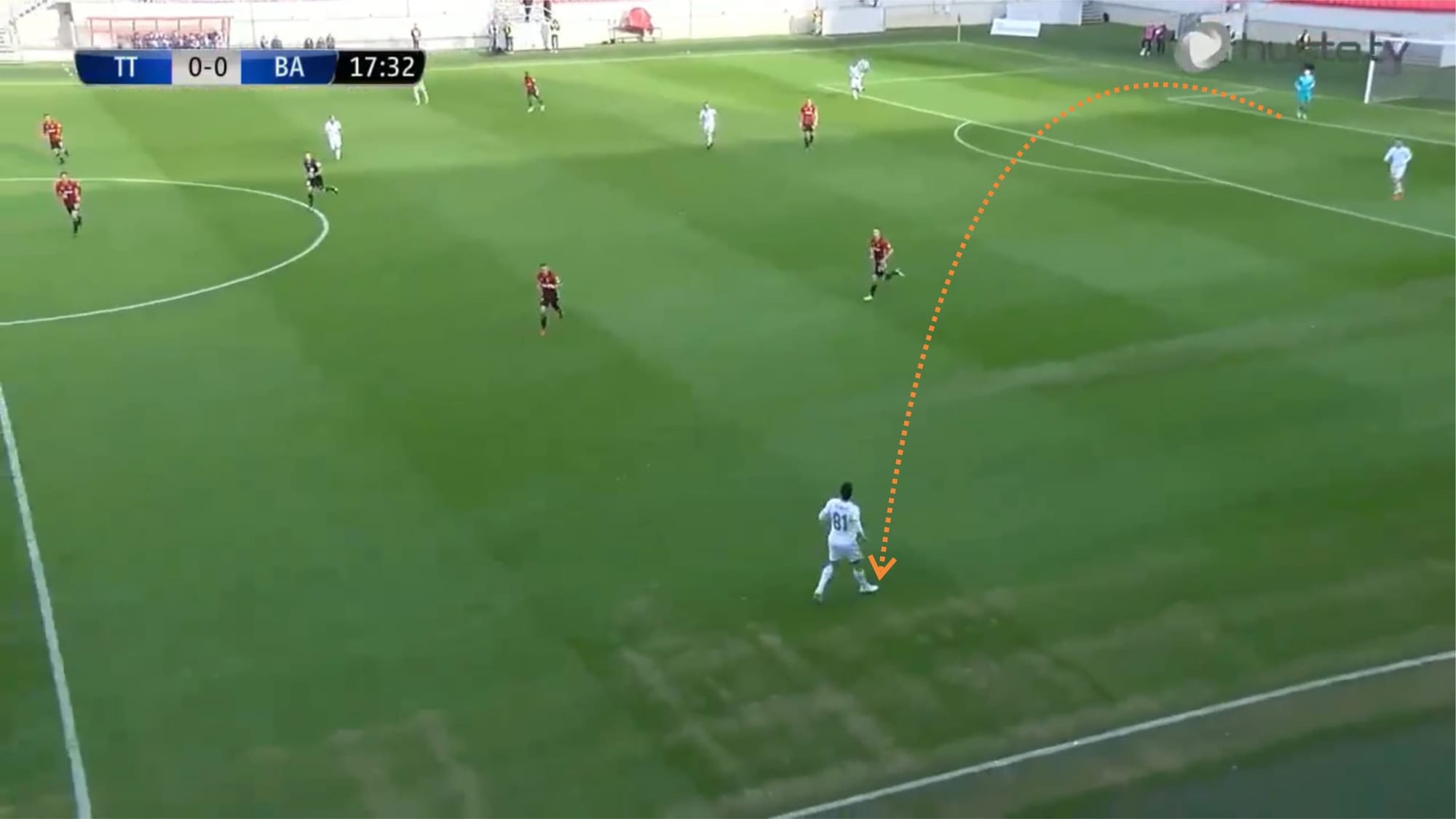
A rather different situation can be seen above where he and the near options were not really tightly marked in this particular situation. However, Greif looked up and assessed the situation and saw that one of his teammates was free on the flank. He managed to execute a neat pass right onto the feet of the intended player, once again displaying good vision, smart decision making, and great execution.
Though mostly distributes the ball short due to his team’s tactics, occasionally Greif is forced to distribute the ball long in a goal-kick. This seems to depend on the opposition’s defensive and pressing setup as well. If playing from the back becomes highly risky due to the highly aggressive approach from the opposing team, or if the opposing team is seen having a weakness in dealing with aerial balls or second balls, he may choose to deliver long goal-kicks. Just like his punts, his proficiency in goal-kicks is also there to be seen. Again, he’s able to produce passes with good range and accuracy due to his impeccable technique and ability to generate good power with his legs.
Statistically, Greif averages about 31 passes played per game with a pretty good success rate of 82%. Greif averages around 14 long passes per game with a success rate of 66% which is actually quite decent considering there are also other factors that should be taken into account, including the forwards’ and opposing defenders’ ability to win aerial duels.
Greif mostly opts for a punt when redistributing the ball in open play but occasionally looks to use hand distributions/throws as well.
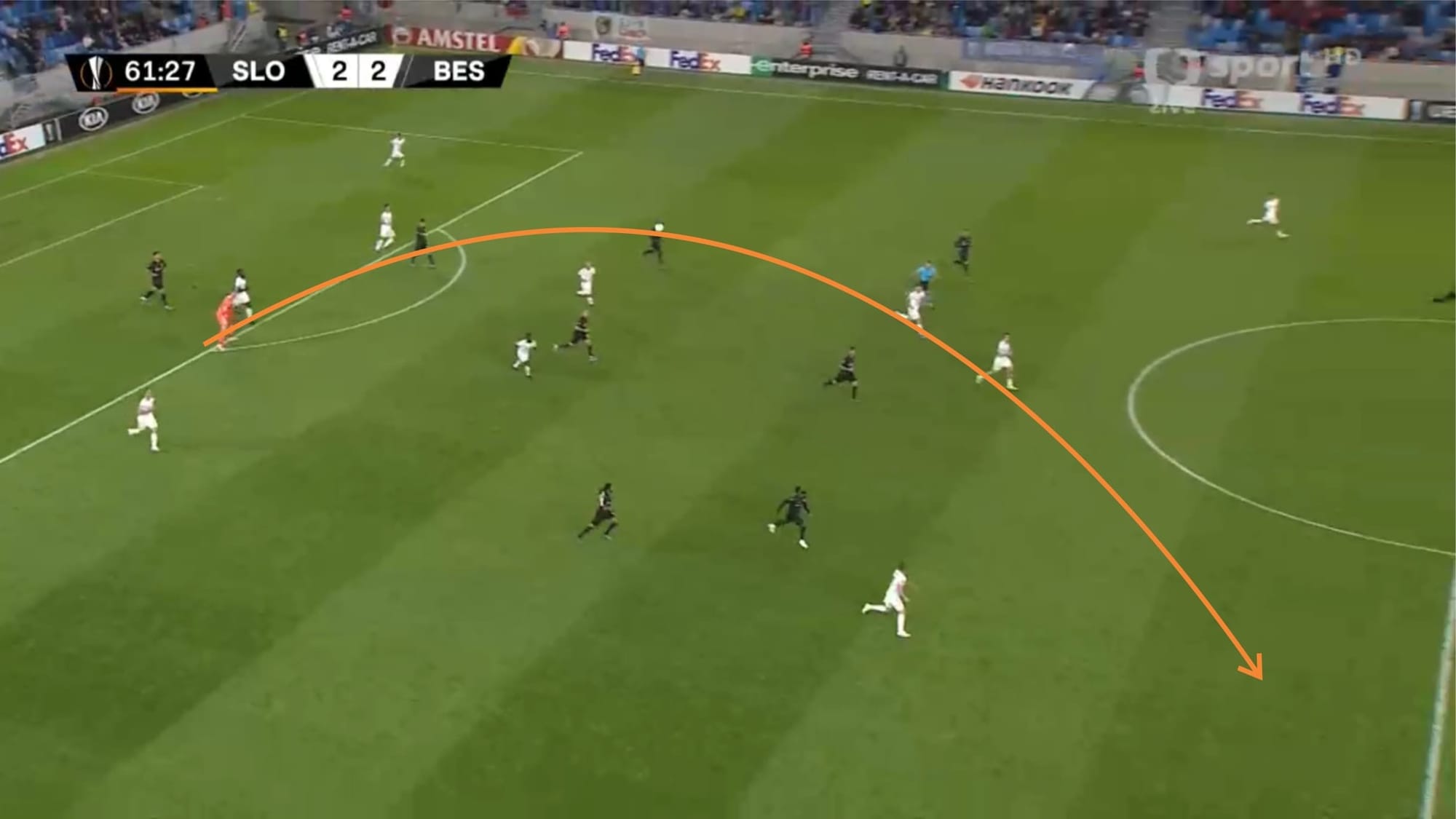
Again with a good technique coupled with good vision in spotting space and teammates’ runs, Greif is able to start a quick counter-attack which can give his team an edge. The 1997-born goalkeeper is able to deliver a hand pass/throw with decent range as he’s able to generate a good amount of power but the accuracy still needs some work.
Stats-wise, Greif averages around 4.3 handpasses/throws per game with a 97% accuracy which at first sounds amazing, but some things also need to be taken into account. Firstly, the high success rate is certainly understandable due to his tendency to mostly deliver short-medium throws that are generally much easier and safer rather than delivering long, riskier throws. Secondly, some small details that can be seen suggest that he still needs to improve on his accuracy as at times his long throws are either a bit too sharp or lacks weight, resulting in his teammates unable to control the ball comfortably or the ball being intercepted by an opponent before reaching his teammate. He does possess the power and vision though so perhaps refining his technique could be a good way to improve this area.
Conclusion
Greif is currently playing at his best but he’s still quite young and he can certainly still develop his attributes before reaching his peak. Though he’s playing at a rather low level currently, his highly impressive displays both in domestic competitions and in Europe don’t go unnoticed. Premier League sides Crystal Palace, Brighton, and Wolverhampton Wanderers as well as Portuguese giants FC Porto have been monitoring his developments since last summer and there can potentially be some interesting movements when the next transfer window opens.
As it stands, Slovan Bratislava can replace Greif with a more experienced Michal Šulla who has proven to be a solid second-choice goalkeeper this season for the side. With his contract still running until 30 June 2023, Greif may not be available for a cut-price fee but he certainly won’t cost too much either. Judging by his current ability coupled with his potential if developed properly, Greif could be a very smart signing for a very smart club.





Comments